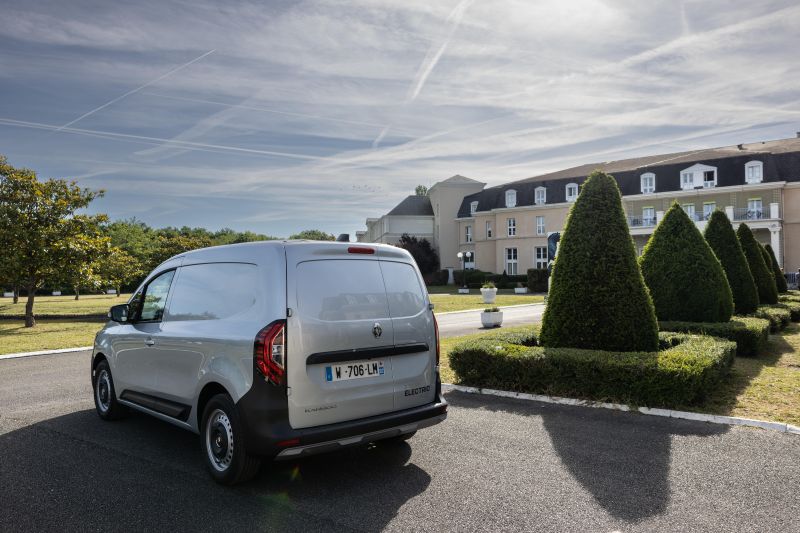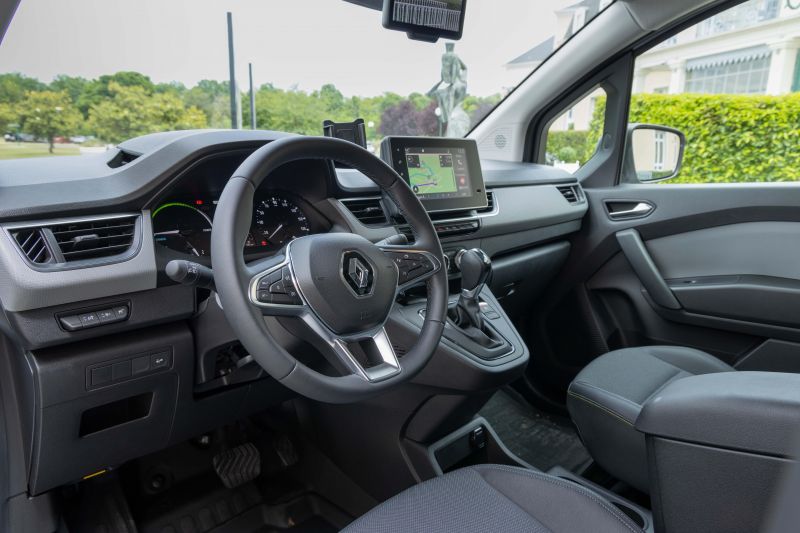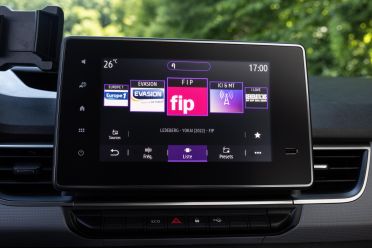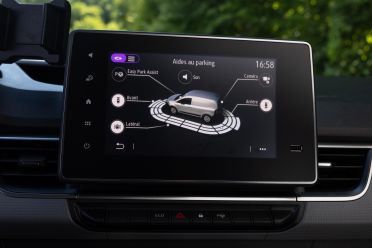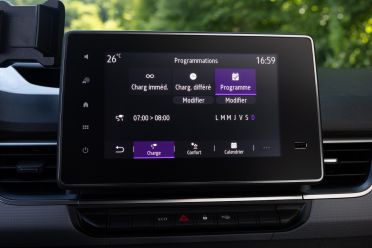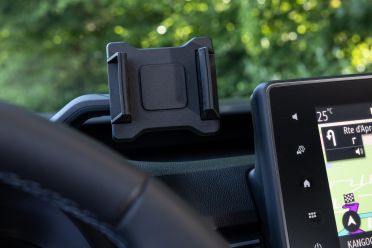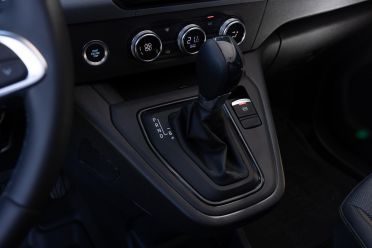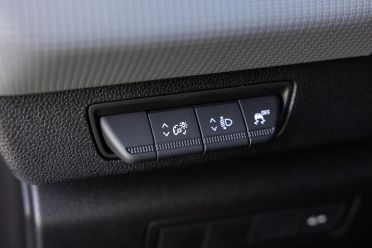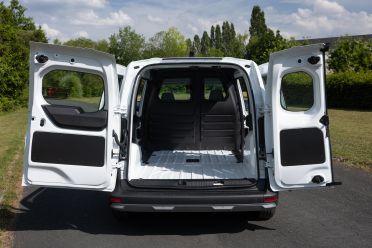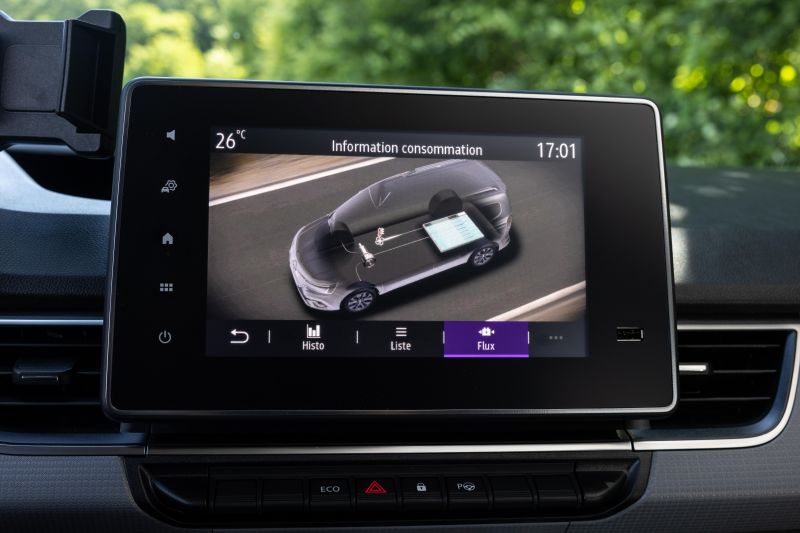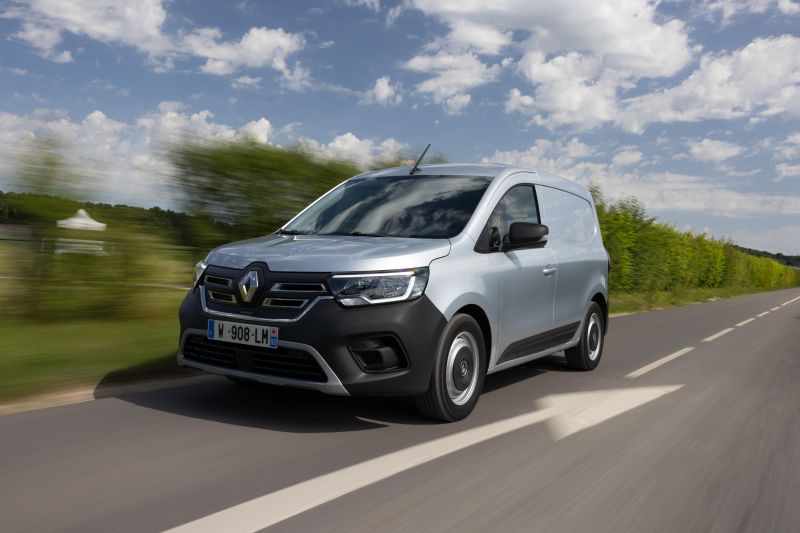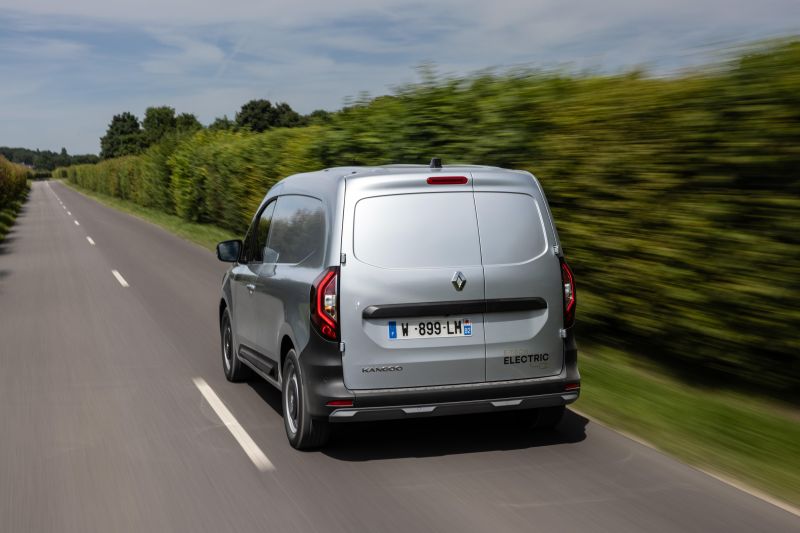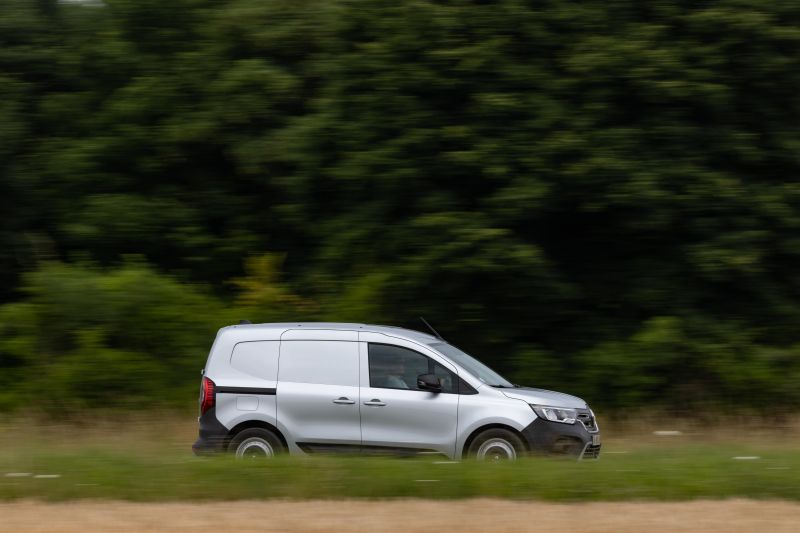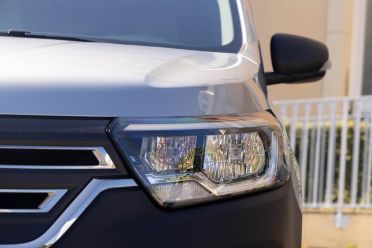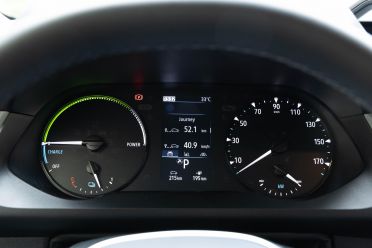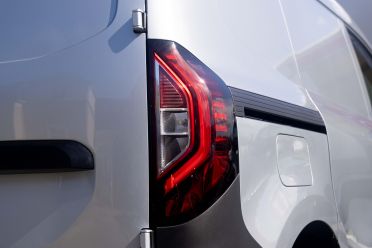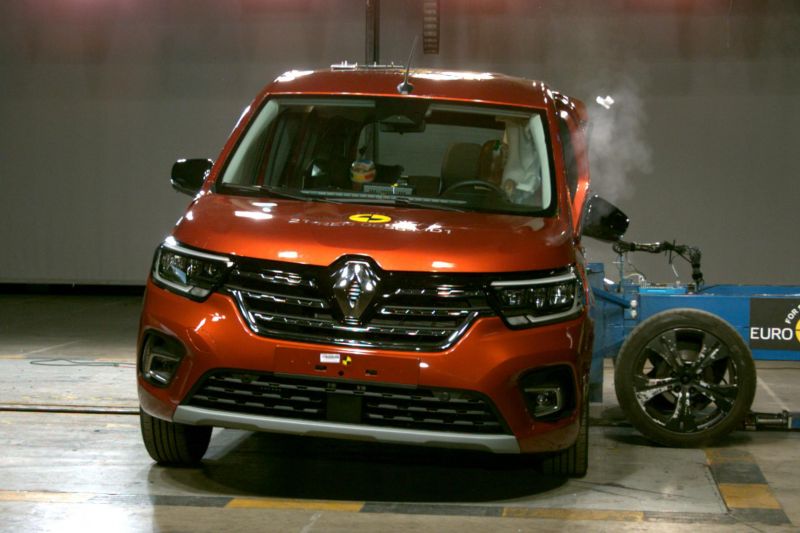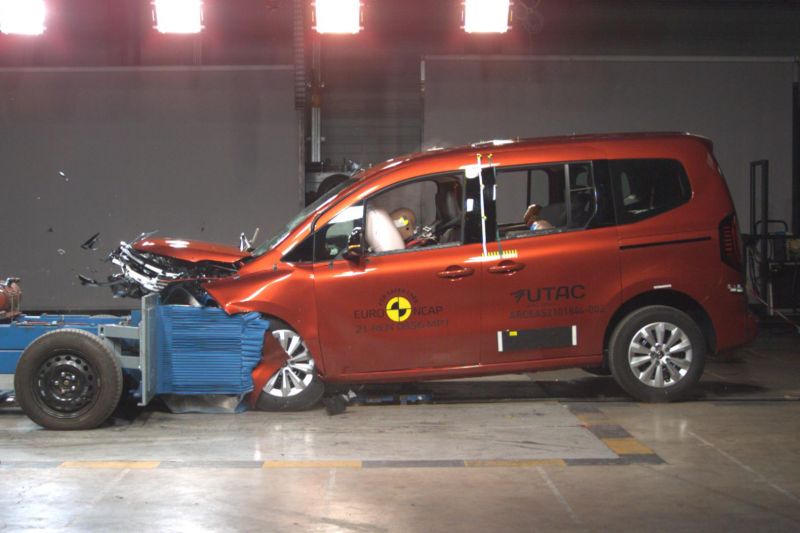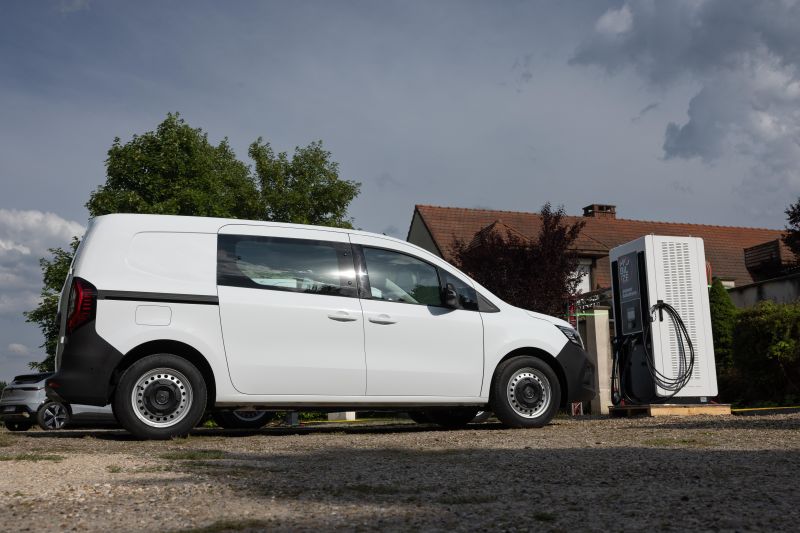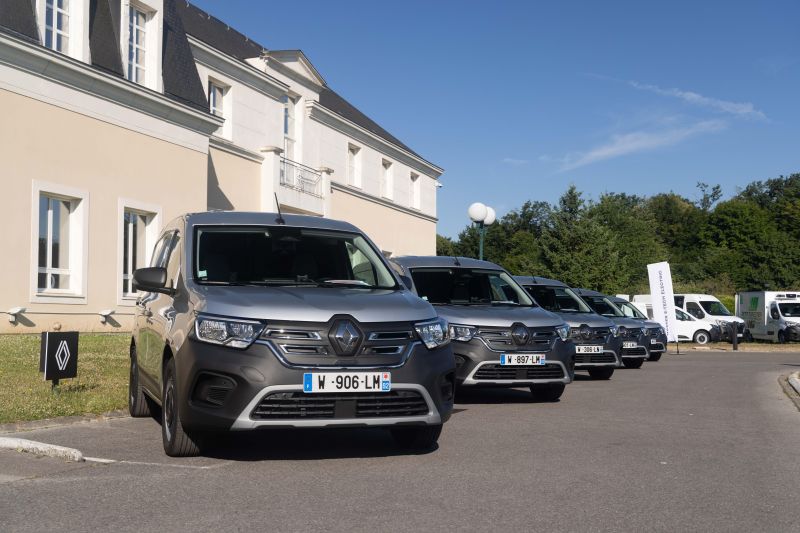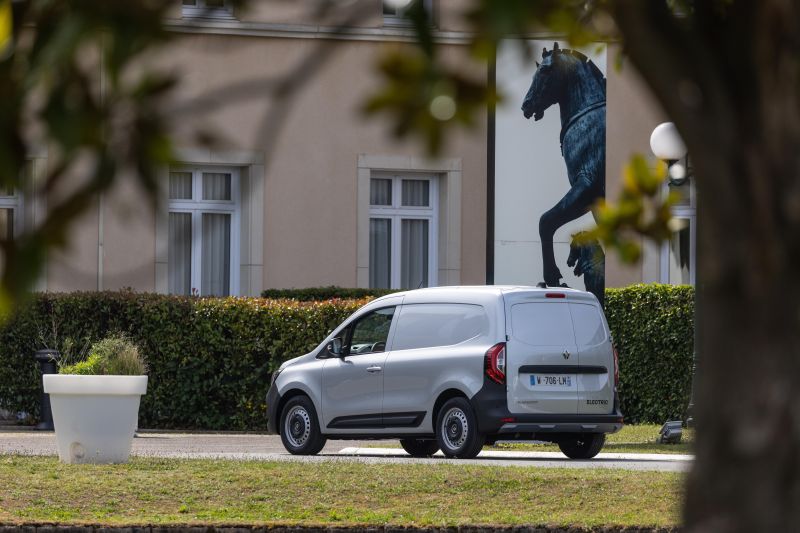The Renault Kangoo E-Tech Electric, is, as the long-winded name suggests, a battery-powered version of the French brand’s latest small van.
Renault’s all-new compact commercial van gets a modern look throughout and a much-needed technology boost, and is due to land in Australia in the very early stages of 2023. It’s already on sale in Europe where it’s also offered with diesel engines in both passenger and panel van versions.
Renault produces the new Kangoo in two lengths and equips it with a more advanced electric powertrain than the outgoing version. The 45kWh battery is good for up to 300 kilometres between charges, and it gets a 90kW drive motor too.
Ahead of its arrival in Australian showrooms in January 2023, CarExpert attended the international media drive of the Kangoo E-Tech Electric in France to see what buyers can expect.
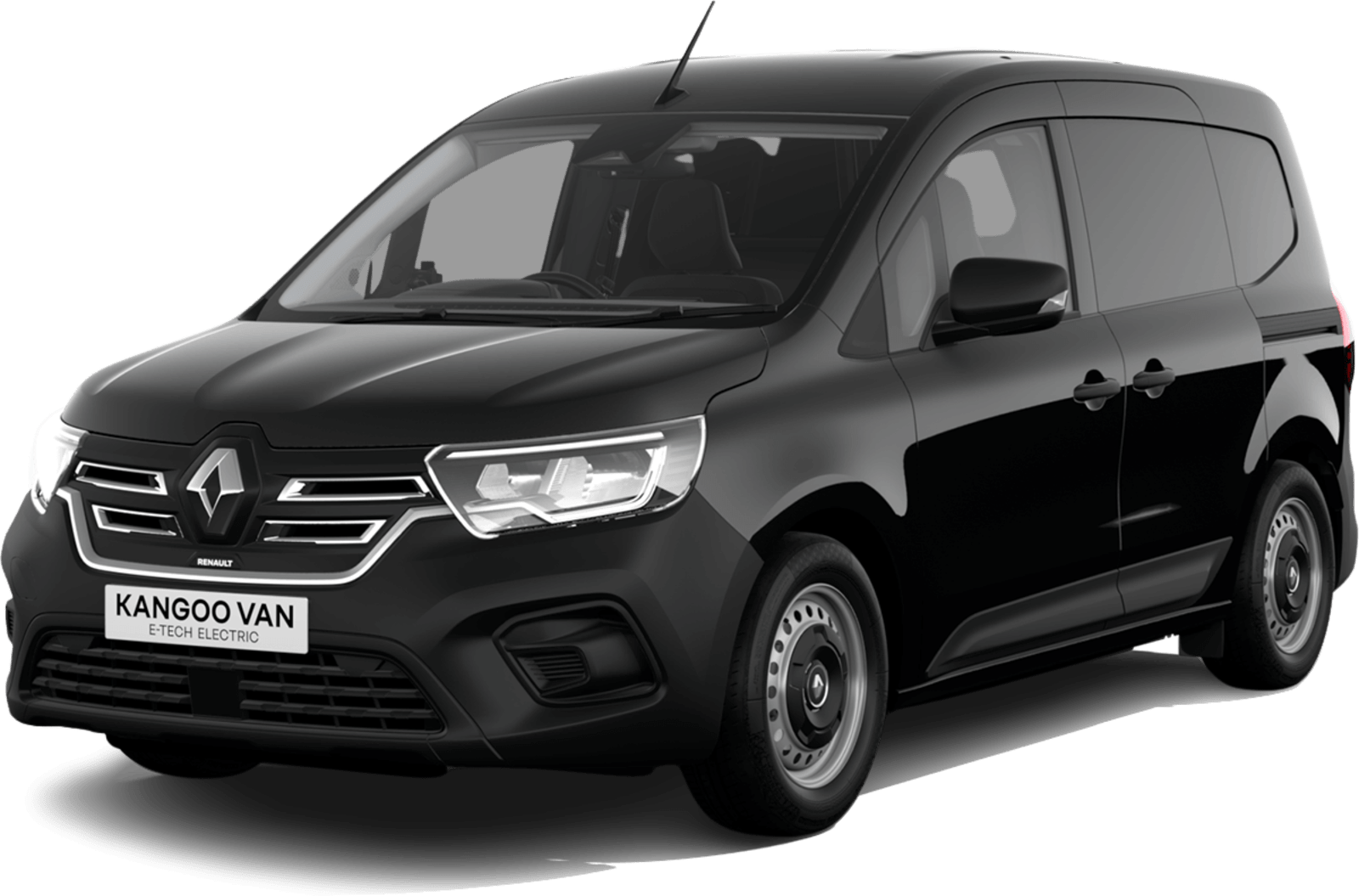
How much does the Renault Kangoo E-Tech Electric cost?
Pricing for the Australian market hasn’t been announced yet, but we expect the new model to carry a premium over its predecessor.
The current Kangoo Maxi Z.E. (short for Zero Emissions), is currently advertised from $55,295 drive-away. It’s based on the second-generation Kangoo van that dates back to 2011.
With that in mind, given the generational improvements and developments to both in-vehicle technology and the electric drive system, the new Kangoo E-Tech Electric will likely be around the $60,000 mark by our estimates.
In Australia, the Kangoo has virtually no competitors, such is the infancy of the electric commercial vehicle segment locally. Local importer Nexport did bring the BYD T3 van ($39,950) in limited numbers a year ago, but that allocation has been exhausted and there’s been no announcement on when we might see more of the Chinese electric vans.
What is the Renault Kangoo E-Tech Electric like on the inside?
As is the case with most vans, the interior is more about function than form, so there’s a lot of hard-wearing plastics to help it stand up to whatever gets thrown at it.
It’s all packaged together in a way that makes it a very civilised place to spend time. After all, for a lot of drivers, this will be their office on the road.
The driver’s seat has adequate levels of adjustment and has enough support in the base and side bolsters to remain comfortable over longer periods. Enhancing the quality feel is the same steering wheel as Renault uses in its passenger cars.
As standard, a 4.2-inch digital display sits between the analogue instruments that show speed and power usage. Renault offers a 10-inch fully-digital instrument display as an option that is fully customisable.
Next to the binnacle is a useful mobile phone holder with USB charging connections located in the storage bin on top of the dashboard in front of the driver.
An 8.0-inch touchscreen runs the latest version of Renault’s Easy Link infotainment system, and the usual Android Auto and Apple CarPlay connectivity is included. The screen sits high on the dash and within easy reach.
Underneath is a row of proper buttons for the hazard lights, central locking and an Eco mode. A wireless charging pad is also available.
There are numerous storage areas dotted around the cabin including reasonably-sized door bins, a shelf above the sun visors and a pull-out drawer-style glovebox – although that would be hindered by the knees of anyone sitting in the front passenger seat.
Further storage is available under the centre armrest, and on the floor there is an open area for loose items ahead of a pair of cupholders.
We like that there are physical rotary dials for adjusting the climate controls too. Just as important is the fitment of a heat pump, which enhances overall efficiency and, according to Renault, helps to preserve as much as 85 kilometres of range.
Our test vehicle was equipped with a camera-based rear-view mirror, which would normally be redundant in a van due to the bulkhead. This setup is similar to what Land Rover offers in the Defender off-roader and provides a clear view of what’s behind – although there is only a small amount of adjustment available for the camera viewing angle.
Integration of the battery into the floor means that the load volume is unaffected and in the standard length the Kangoo can carry up to 3.9m³ with a 600kg payload, while the longer ‘L2’ version can carry 800kg and up to 4.9m³.
Renault’s innovative ‘Open Sesame’ feature does away with the centre pillar between the front and sliding door on the passenger side. However, Renault deemed it too costly to reengineer for right-hand-drive markets, so it won’t be coming to Australia, which is a real pity.
What’s under the bonnet?
The Megane E-Tech Electric offers one drivetrain, a 90kW/245Nm electric motor driving the front wheels via a single-speed transmission – well up on the Kangoo Z.E.’s 44kW and 220Nm.
The new electric Kangoo can accelerate from 0-100km/h in 11.6 seconds and is capable of hitting 135km/h.
Improving on its predecessor, the battery is now a 45kWh unit (up from 33kWh) that can provide a WLTP driving range of 300 kilometres, a notable improvement on the 200 kilometres the outgoing version claimed.
Two on-board chargers are available, with an 11kW being the standard item. An optional 22kW AC charger can recharge the battery from 15 to 80 per cent in 2 hours 40 minutes.
An 80kW DC charger can add 170 kilometres of range in around 30 minutes if you’re hooked up to a suitably powerful charger.
How does the Renault Kangoo E-Tech Electric drive?
To gain a better idea of how the Kangoo performs in the real world, our test vehicle was loaded up with 150kg of ballast in the rear.
Sharing the driving with a colleague, our route took in a variety of scenarios from low urban speed driving to faster motorway work.
The on-paper performance of the 90kW electric motor might not seem that impressive, but in urban settings when you’re mostly accelerating up to 40- or 50km/h it is plenty quick. Also, the quietness and smoothness of the electric motor makes it much more enjoyable to drive than a diesel engine.
Switching to the Eco setting dulls the maximum motor output down to 56kW and limits the top speed to 110km/h. Depending on where you’re driving, this will have an insignificant impact on how the van performs, but will help to prolong the range.
You don’t sit particularly high up in the Kangoo, but the outward visibility is still good. The ergonomics are also good, including the gear selector placed up high on the dashboard – as it was on the outgoing model.
The steering is light yet isn’t entirely devoid of feel and our time in the short version of the van showed it to be a nimble and manoeuvrable vehicle. It rides the lumps and bumps of a city well and the cabin insulation levels keep it quiet at higher speeds too.
Drivers can pick from three levels of energy recovery, with the strongest bringing the Renault close to that one-pedal driving feel many EV drivers enjoy.
Switching between the modes on the go is simple too, requiring a pull or push on the gear selector – so it’s easy to add more regen when you arrive at a steeper decline, for example.
The Kangoo E-Tech Electric is never going to be an exciting thing to drive, but it has more than enough civility in how it goes about its business that if you had to spend a long shift driving one, there’s no doubt that you’re much better off now than you would have been in its predecessor.
What do you get?
Obviously, being an international-market vehicle launch specification of the vehicles on test may not be reflective of upcoming Australian versions.
With that said, items like halogen headlights, an 8.0-inch touchscreen infotainment with Apple CarPlay and Android Auto, analogue instruments with a TFT driver’s display, steel wheels and single-zone climate control feature on base versions in Europe.
Stay tuned to CarExpert for an update on Australian details closer to the new Kangoo’s local introduction.
Is the Renault Kangoo E-Tech Electric safe?
People-mover versions of the new Kangoo wear a four-star Euro NCAP safety rating, based on 2021 testing. There’s no equivalent ANCAP rating as yet, and the commercial van versions appear to be unrated.
The Kangoo MPV managed 78 per cent for adult occupant protection, 87 per cent for child occupant protection, 67 per cent for vulnerable road users, and 72 per cent for safety assist.
Interestingly, the Mercedes-Benz T-Class, which is essentially the German marque’s take on the new Kangoo, score a stronger five-star Euro NCAP safety rating.
Standard safety features for EU-market Kangoo MPVs include:
- Dual front, front-side and side curtain airbags
- Autonomous emergency braking (AEB)
- incl. Pedestrian and Cyclist detection
- Forward collision warning
- Lane-keep assist
- Seatbelt reminders front and rear
How much does the Renault Kangoo E-Tech Electric cost to run?
Renault Australia covers the outgoing Kangoo Z.E. with a three-year, unlimited-kilometre new vehicle warranty with an additional five-year, 100,000km battery warranty – to 70 per cent capacity.
That’s a little off the wider Renault commercial range’s five-year, 200,000km cover (including combustion-powered Kangoos), and of course the five-year, unlimited-kilometre warranty for the French brand’s passenger lines.
We expect, however, given the increasing competition across all electric vehicle segments, including ever-extending warranty programs, we’ll likely see five-year cover for the Kangoo E-Tech. Time will tell.
The Kangoo Z.E. also isn’t covered by any capped-price servicing schedule, unlike the wider range. We also anticipate this will change with the new model. Stay tuned.
CarExpert’s Take on the Renault Kangoo E-Tech Electric
Even Renault admits the Kangoo E-Tech Electric isn’t going to be for every van driver. However, its range is now much improved over the outgoing generation and the faster charging rates help if you do need to stop at a public charger.
For a lot of companies and tradespeople this could be the van that helps get them over the line into going electric. It has little compromise in terms of what it’s capable of carrying and is far nicer inside the cabin than before.
Without local pricing and specifications confirmed it’s hard to say just how much better value it could be for businesses in the long term, but it already brings many positives and is sure to gain interest when it arrives in Australia.
Click the images for the full gallery

